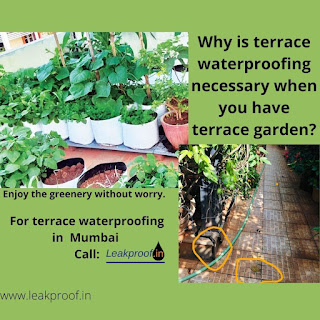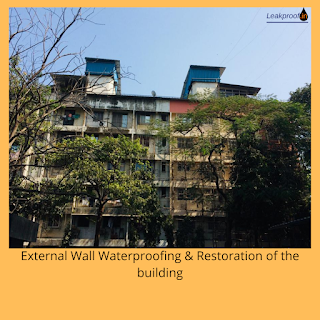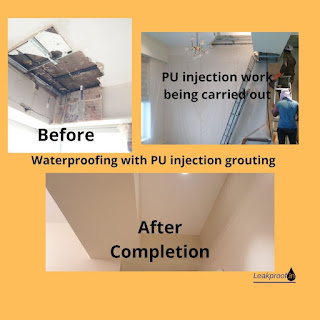Terrace waterproofing-An absolute necessity when you have a Terrace Garden
Terrace gardens or roof gardens as they are also known, are a wonderful boon for those who possess a green thumb and for us city dwellers for whom a small patch of green is equivalent to heaven.
Many modern society complexes and apartment owners with terrace space have created wonderful green terrace gardens. However, water leakage issues can spoil the fun unless proper care is taken in the form of professional Terrace waterproofing.
Most people think that brick bat coba is enough as a waterproof layer and a terrace garden can be created without a hitch. In fact, it is one of the weakest layers for terraces.
Basically, roof construction should be based out of concrete grout and flexible waterproofing polymers. Membrane waterproofing is a powerful option and is finding a lot of favor amongst terrace garden owners and maintenance teams for buildings.
Why Membrane Waterproofing?
The lack of effective options and a wonderful track record of membrane waterproofing are the reasons why one can rely on this technology to keep your home and terrace free from leakages.
At one point of time, flooring tiles and wall tiles were considered to be a good alternative but it is a proven fact that tiles can break and any waterproofing film applied over it can come out with it.
Let us understand what a waterproofing membrane is.
A waterproofing membrane is a thin sheet or layer of waterproof material that can be easily laid out over any surface. It does not allow the passage of water through it as it is continuous.
In case of a terrace garden , the membrane is considered to be the first and most powerful line of defense when it comes to Waterproofing Solutions. It is laid on the structural slab and before the floor tiles are laid to finish the surface.
This ensure that there is no water seepage through the structural slab. However it is important to ensure that the membrane and tiles are properly laid on filler material that has been sloped so there is no water accumulation. Water puddles can easily seep into the slab over a period of time and therefore cause leakage in the floors below.
Waterproofing membranes are a series of thin layers that are put together and can be between 2 and 4 mm thick. They are generally classified into two types, liquid applied membranes and sheet-based membranes.
The main characteristics of a waterproofing membrane are strength, flexibility, elasticity and tear-resistance. Due to these, it can stretch to cover cracked surfaces and compensate any kind of expansion that takes place within the building structure.
Sheet based membranes are ideal for terrace waterproofing since they arrive in sheet form and can be unfurled and put out on the firm surface of the terrace. The bituminous membrane type is stuck using blow torches and a hot tar-based adhesive.
Adjacent membranes are joined using a similar adhesive after they are overlapped with each other by about 4”. Other types of sheet based membranes are composite membranes and PVC membranes.
Composite membranes have a fabric base which is tear resistant and strong. The fabric is coated with a chemical to help it resist water seepage to a great extent.https://youtu.be/q7DvB1-4luc Video on liquid membrane waterproofing.
Liquid applied membranes, as the name suggests, are sent to the site in liquid form and are then sprayed on the surface or brushed on to it. This liquid can be applied a number of times, depending on the thickness of coat that is desired. Since these membranes are joint free, they are considered to be superior to sheet-based membranes.




We are the leading terrace waterproofing company in Zirakpur . We use the best quality waterproofing chemicals on your terrace. We repair the seepage of your terrace.
ReplyDelete